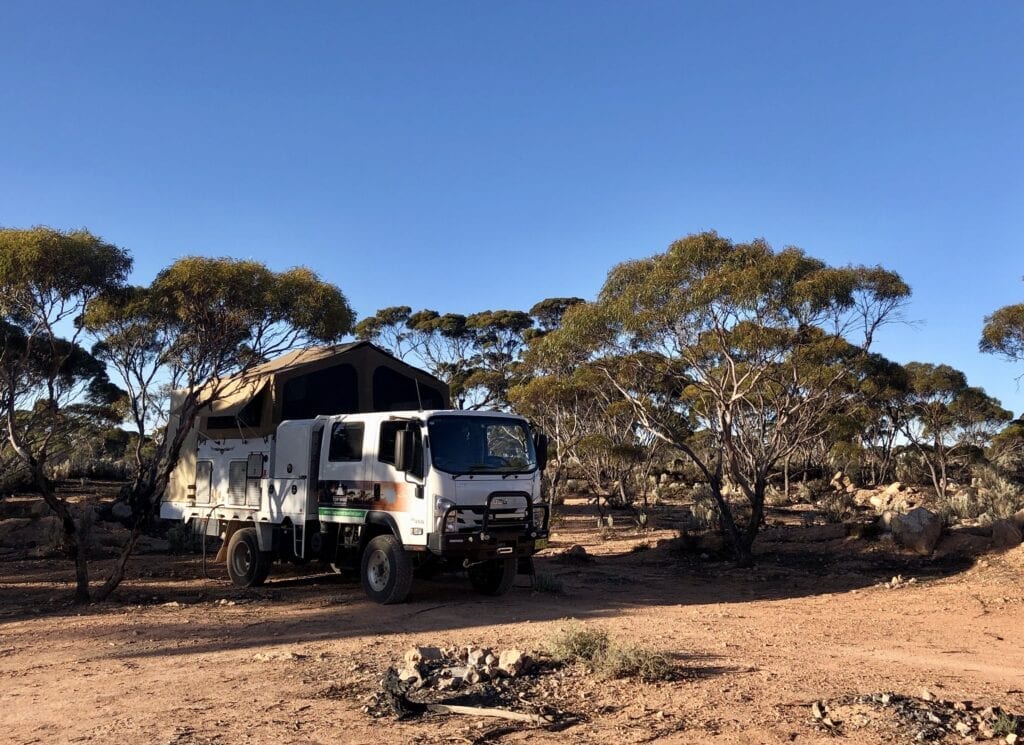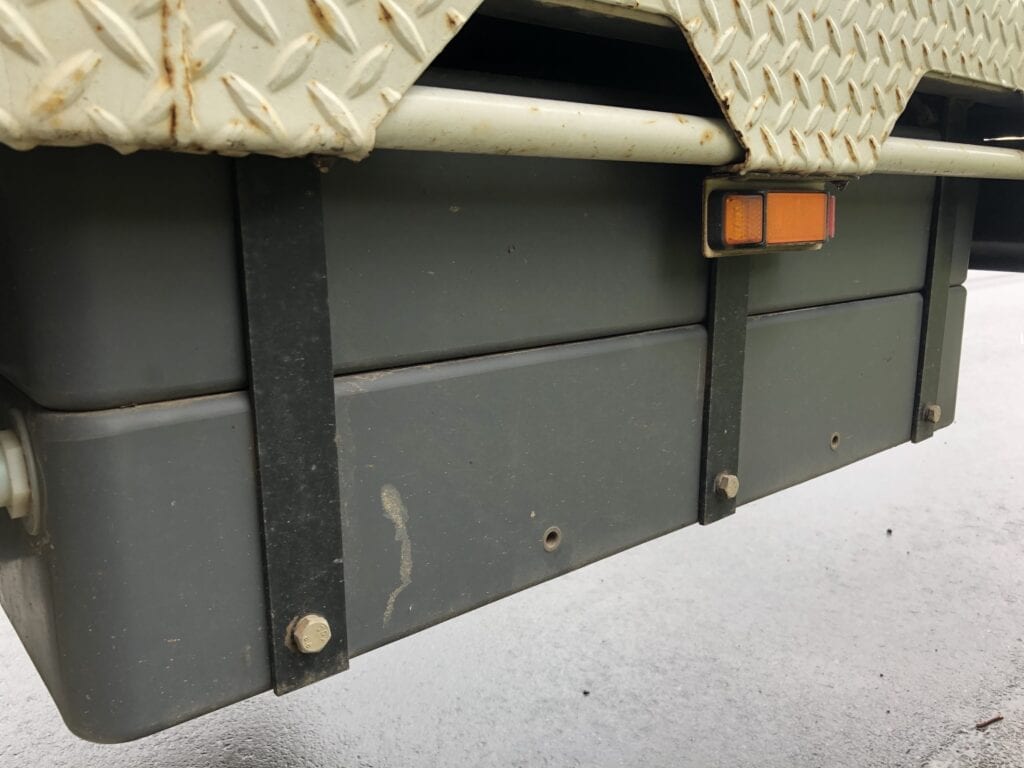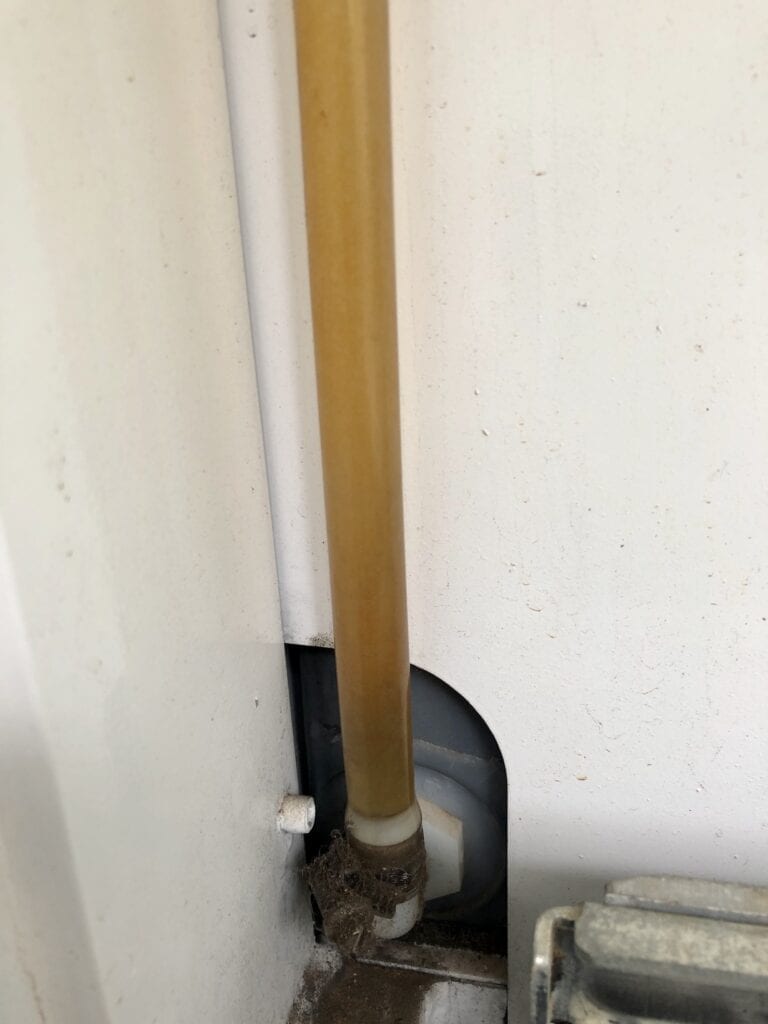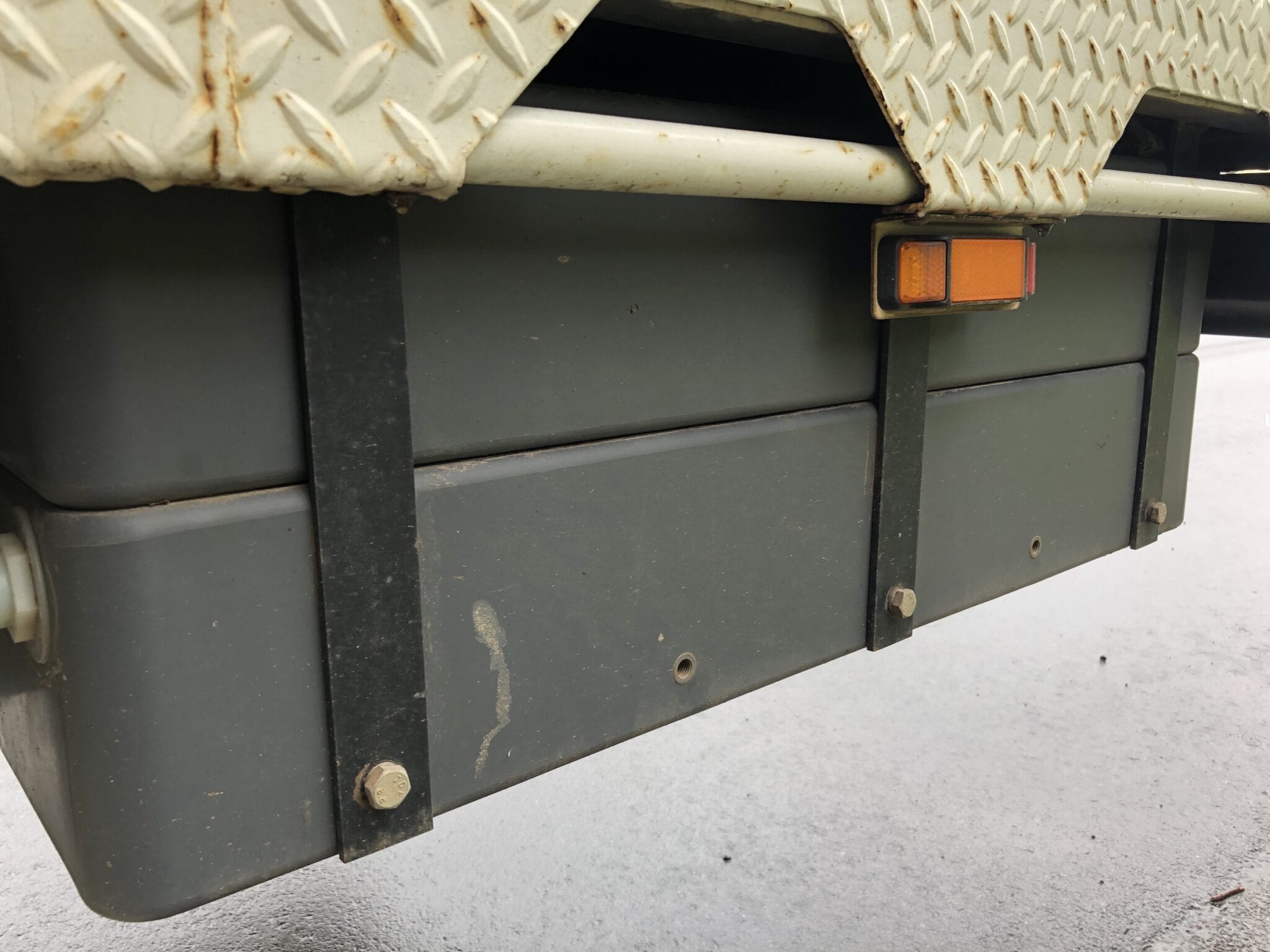Note: This article contains affiliate links to My Generator & Snowys. If you click through and make a purchase, we earn a small commission at no extra cost to you.
What are the “best” water tanks for camping and 4×4 setups? Should you go with poly water tanks or are aluminium or stainless steel tanks better?
If you want fresh drinking water, then your choice of tank material is important.

And choosing the right water tank takes some thought. Maybe you’re after under-tray water tanks for a ute or you want to fit-out your camper trailer with water tanks.
Whatever your camping setup, there’s a few things to consider.
We’ll try and sort out the myths from the facts to give you a better idea of why one type of water tank might be more suitable than another.
Let’s start by going through the pros and cons of the different materials.
The “Best” Material
The best material is the one that works for you. You’ll need to consider weight, space, price and cleanliness.
Your number one consideration should be whether the tank will keep your water clean and safe to drink. With this in mind, we’ll start by looking at one material you definitely shouldn’t use…
1. What Not to Use – Galvanised Steel
Don’t use galvanised sheet steel as the material for your 4WD water tanks.
The argument is that galvanised steel water tanks have been around for many years as farm water storage tanks and the like.
The thing is, they’re constructed differently.
Galvanised steel farm water tanks are generally made from rolled galvanised sheets and bolted together. The joins have a sealant to prevent leaks.
Newer galvanised farm tanks also have an internal plastic lining to protect the inner metal surfaces from rust.
By constructing the tanks in this way, there’s no welding. So the galvanised coating isn’t damaged by welding. But if you build a small water tank for your camper or 4WD, welding is really the only practical way to build it.
The result? Heat from welding burns off the galvanising and exposes the bare metal. So you’ll end up with a whole lot of rust inside your water tank.
Worse still, the zinc in the galvanising can give you metallic-tasting water in a small tank.
However, the biggest enemy of galvanised steel tanks is town water.
A farm tank is generally filled with rain, creek or bore water. However, you’ll likely need to fill your 4WD water tanks with town water… in fact, anywhere you can get drinking water along the way.
And most town water contains some level of chlorine. Now chlorine loves galvanising. It attacks the galvanised coating and eats it away over time, exposing the bare metal underneath.
After a while, you’ll end up with rust inside your water tank. Not a good look and not too tasty either…
Galvanised Steel in Summary
Pros
- Galvanised sheet steel is inexpensive.
- Easy to weld.
- Easy to add fittings where needed.
- Mild steel is relatively soft, so is less prone to metal fatigue and cracking.
Cons
- Any damage to the galvanised coating will cause rusting.
- Possible metallic taste from the zinc oxide used in the galvanising process.
2. Aluminium Water Tanks
Is the water from aluminium water tanks safe to drink? According to the experts it is. The supposed link between Alzheimer’s Disease and aluminium has not been proven, despite many years of research and trials.
But aluminium has a few problems as a material for camper water tanks.
The biggest issue is with chlorine. It tends to eat aluminium, causing pitting and eventually holes. Worse, the reaction between aluminium and chlorine forms aluminium oxide crystals. These end up in pumps and filters, clogging them solid.
Not an issue if you always fill your tank with rainwater. But definitely an issue if you use town water. And definitely an issue if you use a chlorine-based solution to clean out your water tanks.
The other problem with aluminium is its tendency to crack due to constant vibrations (metal fatigue).
A really good welder experienced with aluminium will know how to TIG weld an aluminium tank, to minimise high stress points. They’ll also know which grades can be bent and how to reduce stresses caused by bending.
Only a few grades are suitable for water tanks. The most suitable are grades 1100 and 5052. They have a high fatigue strength (resistance to repeated vibrations in this case) and are the most resistant to water corrosion.
The problem is, grade 5052 is not the easiest to bend without splitting it and rates as only okay for welding. Grade 1100 is fine for both.
Grade 1100 is only available in 1.6 or 3mm thick sheets, so your choices are limited. And good luck finding either grade 1100 or 5052 in Australia. Your best bet is specialist marine aluminium suppliers.
Would I buy or get an aluminium water tank made, considering we spend a lot of time on rough roads? No. It’s too prone to developing cracks for my liking.
Aluminium in Summary
Pros
- Lightweight.
Cons
- Limited selection of material grades and difficult to source.
- Prone to metal fatigue, especially in areas of high stress like bends and welding zones.
- Highly susceptible to corrosion from chlorine if the correct grade is not used.
- More difficult to weld than mild steel and stainless steel.
- Expensive compared to poly.
3. Stainless Steel Water Tanks
Stainless steel water tanks are the best option if your heart’s set on water tanks made from metal.
You won’t have any issues with taste and if properly built, a stainless tank will last a lifetime.
Stainless steel is resistant to corrosion, can be bent to a tight radius without too many dramas and is relatively easy to weld.
Grade 304 stainless is ideal for 4×4 or camper water tanks. It’s resistant to corrosion, so chlorine won’t damage it. In highly corrosive environments like boating, grade 316L is a better option. It has a higher corrosion resistance than 304.
A stainless water tank will be heavy compared to a poly or aluminium water tank. And it tends to distort quite a lot due to the heat from welding. So, don’t be surprised if the sides of your small tank aren’t completely flat and smooth.
A good stainless steel welder will know how to build the tank, to minimise stresses in and around the welds.
The biggest issue with stainless is its tendency to work harden over time. What do I mean by this? Well, say an outlet socket is welded into the side of the tank and has a tap screwed into it.
As you’re bouncing over corrugations, this socket and tap set bounces up and down repeatedly… thousands of times every day. When I say “bounce”, it might only move a tiny distance back and forth. And the tank wall where the socket’s mounted flexes back and forth as well.
Over time, some part of the tank wall will most likely harden, become brittle (work harden) and eventually crack.
You’ve no doubt heard stories about stainless steel water tanks splitting or cracking. Water tanks in imported so-called “off road” camper trailers are well known for these types of issues.
The thing is, these stainless tanks weren’t built correctly in the first place. However, a properly built stainless steel tank should last you a lifetime.
Would I buy or get a stainless steel water tank made, considering we spend a lot of time on rough roads?
- If I bought one, I’d want to see it before buying to be sure it was built correctly.
- If I had one made, I know a handful of experienced welders who I’d trust to build it properly. I would never get one made by someone I didn’t know.
Stainless Steel in Summary
Pros
- Strong, will last a lifetime if properly made.
- No issues with corrosion.
Cons
- Heavy compared to aluminium and poly.
- Expensive compared to poly.
- Prone to work hardening and cracking if not correctly built.
4. Poly Water Tanks
Poly water tanks are a good option. They are lightweight, much cheaper than stainless steel or aluminium water tanks and durable.
The most common complaint about poly water tanks is that they impart a plastic taste into the water. If you follow a few guidelines, this should not happen. When you’re buying, look for:
- “100% safe for potable (drinking) water” or similar.
- “BPA free”. BPA is bisphenol A, an industrial chemical known to cause health problems.
- “Complies with AS2700”, which is the Australian Standard covering plastics used for safe drinking water.
Then to avoid the plastic taste, fill and flush the poly water tank several times before use. And when you fill your tank, use BioMagic WaterPure. This product sanitises your water for 12 months from one dose and doesn’t leave any taste in the water.
Another important consideration is how the poly tank is made. Make sure it’s rotationally moulded (roto-moulded).
Roto-moulding ensures the tank is one continuous piece of plastic, making it very strong and durable. Quality roto-moulded tanks will have extra thickness in high stress areas like corners.
And since plastic is so light compared to steel, quality manufacturers will make the wall thickness quite thick for added strength. For example, the undertray poly tanks on our truck camper have 10mm thick walls.

Another consideration… make sure the tank has enough fittings pre-installed. It’s very difficult to install watertight fittings afterwards.
Finally, make sure the tank is made from UV-stabilised plastic. This simply means it won’t break down in sunlight.
Poly tanks really are the best option. If you start looking around, you’ll most likely find a tank suitable for your application. Here’s a few places to start looking:
Polymate are an Australian company who sell a wide range of water tanks. Their range includes headboard, undertray, underfloor, wheel arch and general cartage tanks.
Boab are another Australian company who have a range of undertray, general cartage and headboard tanks, plus a range of accessories.
My Generator also sell water tanks plus a wide range of accessories.
Poly Tanks in Summary
Pros
- Strong and durable.
- No issues with corrosion.
- Lightweight.
- Cheap.
Cons
- Difficult to fit extra inlet/outlets later on.
- Cheap imported poly tanks may not be BPA free or UV stabilised enough to withstand the harsh Australian sun.
Other Options
So far we’ve only spoken about fixed water tanks. However, there’s two other options which may suit you better, depending on your setup.
1. Water Bladders
Water bladders are a great option if you don’t want to permanently mount water tanks.
A water bladder is basically a food grade PVC “pillow” which you fill with drinking water. It sits across the rear footwell of a 4WD wagon, can easily fit into a ute tub or in a ute canopy, or behind the rear seats.
When empty, water bladders roll up into a compact size for easy storage.
Water bladders come in all shapes and sizes. Just make sure they are made from food grade/drinking water-safe materials. And some have internal baffles to stop the water sloshing around… although they’re not easy to find.
A few companies used to provide internal baffles, but they don’t offer this option now for whatever reason.
2. PVC Pipe
This list wouldn’t be complete if we didn’t mention PVC pipe! Quite a few people use PVC pipe as storage tanks.
The upsides:
- Cheap.
- Easy to assemble.
- Can fit in those “spare” spaces that aren’t useful for anything else.
- Is safe to use for drinking water.
The downsides:
- Because it’s round, it isn’t a very efficient way to use your available space.
- Can be quite brittle (low impact-resistance) … a stray rock will most likely split the PVC pipe.
- Some PVC has a low UV stabilisation, so won’t last long if exposed to continual sunlight.
I’ve seen PVC pipe used against headboards, behind seats and on roof racks. And that’s why they can be a good option… grab some PVC pipe, elbows, pipe glue and a few fittings, and you’re good to go.
Just be careful if you mount them on roof racks. You’ll have a higher centre of gravity and you’re potentially adding a lot of weight to the roof rack mounting brackets.
It’s definitely a cheap and easy option. You just don’t get a lot of water storage for the space it takes up, that’s all.
Watch-Outs For Any Water Tank
There’s a few things common to any drinking water tank, no matter what the style or material.
Keep it Clean
This starts with the water supply and the filling hose you use. I wrote about this in detail – see the section on “Be Careful Where You Fill Up…”. If you follow these guidelines, you’ll never have to worry about a tankful of foul-tasting water.
Once the water’s in your tank, sanitise it… every time you fill up.
Now you might have noticed we push the BioMagic barrow pretty hard. Yes, we receive a tiny commission if you buy the product. However, the only reason we promote it is because it works.
It sanitises the water, kills algae and bacteria, doesn’t have any residual taste and one dose lasts for 12 months. In other words, it keeps your tank clean… without blasting your drinking water tank with horrible chemicals like bleach or chlorine.
At the risk of sounding like a late-night advertorial, if you consistently use BioMagic then your tank will stay clean and free of bacteria.
Installation
If possible, secure your water tank with straps rather than bolting it solid to the tray or a frame. If you use steel straps, run a strip of rubber or closed cell neoprene between the straps and the tank.
Straps will reduce the chances of twisting and stressing the tank when the body it’s bolted to flexes… it’s less likely to develop cracks.
Another reason for using straps? You need to allow the tank room to expand and contract. If you bolt the tank down solid, it will stress the tank as it grows and shrinks depending on the ambient temperature.
You might be wondering why the undertray poly water tanks installed in our truck camper are bolted solid. Well, this was a case where strap-mounting them wasn’t really practical.
Finally, try to install the tank out of direct sunlight. There’s nothing worse than hot water on a hot day! Not only this, your tank will last longer if it’s not in direct sunlight.
Sight Glasses
Sight glasses are really useful for quickly checking the tank level. The problem is, UV light promotes algae growth. This is why you often see sight glasses with a whole lot of grimy black gunk inside them.

And if there’s algae inside the sight glass, you can be sure it’s inside your tank as well.
To avoid this, sanitise your water tank every time you fill it.
If the water is sanitised, the algae can’t grow and your sight glass won’t get a build-up inside it.
If you get slack and you see algae growing, sanitise the tank with… you guessed it, BioMagic WaterPure! We had this exact issue with one of the clear connector hoses on our undertray tanks. Within a couple of days after sanitising, it had completely disappeared.
In summary, sight glasses are great. But they are prone to algae growth. Keep a close eye on them for any signs of algae.
Keep it Full
What if you’re between trips? Is it better to keep the tank full or drain it?
Keep it full… and sanitised. An empty or near-empty tank is an ideal breeding ground for all sorts of bacteria. However, nothing can grow in a full tank of sanitised water.
How do you store a water bladder though, given they’re designed to be removed when not in use? Well, if you have room in your freezer then chuck it in there! That will keep the bacteria at bay.
Final Thoughts
So, what are the best water tanks for camping and 4×4 setups? It depends on what you want, your budget and how much space you have.
There’s no single “correct” answer here.
Personally though, I would go with poly tanks every time. We had a stainless steel water tank which spent many years in the back of our Pajero, then under our off-road camper trailer. It was mercilessly pounded over some of the worst roads in Australia.
It was fantastic… but very heavy. In hindsight, a quality roto-moulded poly tank would have done the same job and saved a stack of weight.
And don’t dismiss the water bladders or PVC pipe option either.
Go with whatever suits you and gets you out there, exploring this brilliant country!
Go here for more How-To Guides and tips.

Get your Traveller’s Guides
… and a whole lot more at our FREE RESOURCES Page!
Any questions or comments? Go to the Comments below or join us on Pinterest, Facebook or YouTube.
Any errors or omissions are mine alone.


For aluminium tanks 5052 is easy to weld and any aluminium supplier has it.
Using the right dies when bending won’t crack easily. As long as the tank is secured properly cracking from vibrations is limited. I used to build aluminium fuel tanks for boats as its a marine grade, and holds up.
Definitely keep chlorine away from aluminium but if you need to use chlorinated water make sure you tanks have breather tube to allow the chlorine fumes how ever small to escape. Heat will normally get rid of chlorine but it needs to go somewhere.
Thanks for sharing this, great info! Cheers, Andrew
Water security has become a deep concern across Australia, as a result of inadequate dams, expanding population, and the effects of global warming, culminating in frequent catastrophic droughts.
It certainly has. Cheers, Andrew